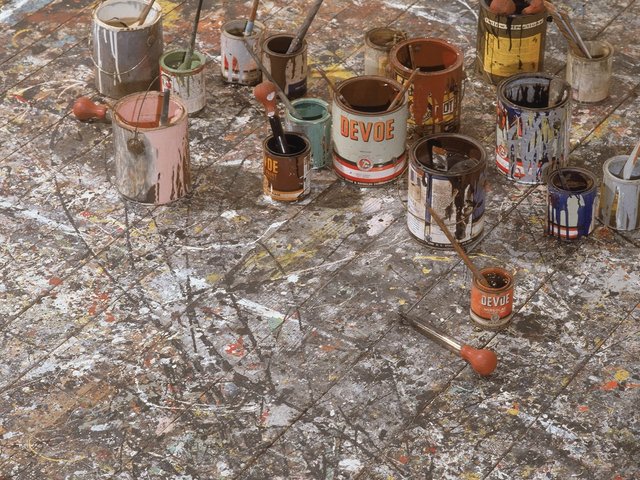The estate of Jackson Pollock’s lover, the artist Ruth Kligman, has renewed efforts to authenticate and sell a painting in its possession that it believes is a genuine creation of the late, great abstract painter. Armed with new forensic research, trustees have started showing the work to invited curators, collectors, scholars and artists.
“A museum [buyer] would be ideal,” says Lisa Ivorian-Jones, a curator who works with the Kligman estate, “or someone closely affiliated with a museum who will keep the work in New York.”
Kligman, who died in 2010, spent the last 20 years of her life trying to persuade the art world that the painting in question, entitled Red, Black & Silver, was made for her by Pollock just weeks before his fatal car crash in 1956. However, the claim was rejected by the artist’s widow, Lee Krasner, and by the Pollock-Krasner Authentication Board. In 2012, the Kligman estate tried to sell the work through Phillips de Pury in New York, but the auction house withdrew the painting from sale so that further research could be undertaken.
In 2013, Kligman’s estate hired the forensic scientist Nicholas Petraco. “I treated it like a homicide investigation,” Petraco tells us. After a series of tests, he identified a hair in the work that turned out to be from a polar bear. This strengthened the estate’s case that the work was created in Pollock’s East Hampton studio, where the artist laid his paintings on the floor and where he had a polar bear rug.
Davey Frankel and Jonathan Cramer, trustees of the Kligman estate, are working with Ivorian-Jones on a paper that synthesises all the evidence from over the years, including a 1995 letter from the dealer Leo Castelli, in which he wrote: “It appears that the painting was executed with skills that Jackson had.”
Ronald Spencer, the long-time legal counsel for the Pollock-Krasner Foundation, is sceptical that much will change, however. “The problem is that they have to build some kind of consensus among the authorities, which is something they haven’t been able to do for the past 20 years. I don’t think they’re going to be able to do it now,” he says.
Petraco disagrees. He believes in the power of forensic science to shed new light on art-historical research. “It’s really a totally new way of looking at things,” he says, adding that any animosity that may have existed between Pollock’s wife and his lover should now be forgotten. “The wife is dead. This is art history we’re talking about now.”




